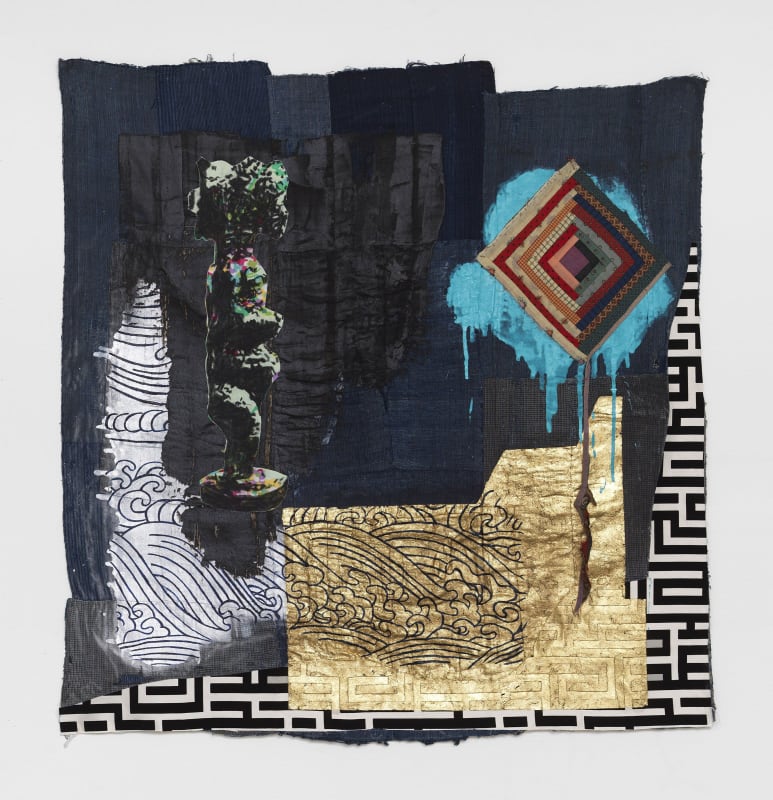BY CARLY OLSON
When artist Sanford Biggers arrives at his studio, he never knows what he's going to find on his doorstep. Often, it's a box full of quilts. And, contrary to how some might react to their art studio being converted into a glorified donation drop-off, Biggers is thrilled. Sparked by one of his collectors donating dozens of her own quilts, Biggers has been working magic on found textiles ever since, repurposing, patchworking, and turning them into geometric feasts that are as provocative as they are beautiful.
In "Selah," his first solo exhibition at Marianne Boesky Gallery, which opens September 7, Biggers' works with found textiles and sculptures comment on American cultural and political narratives in order to combat what Biggers refers to as "historical amnesia," encouraging dialogue and reviving collective memory. Though its true meaning has never been determined, the word "selah" is thought of as a musical or literary mark that appears at the end of Bible passages, connoting a pause. Biggers hopes that viewers will be inspired to make connections between the works, and to pause between them.
From a young age, Biggers was fascinated with textiles. When his older cousin—the muralist and painter John Biggers—returned from a trip to Ghana full of knowledge about African textiles, those graphic influences began to seep into his projects. "I grew up with this work and was always sort of mesmerized by how it looked, but knowing there were these other messages," Biggers says. One of these other messages is a historical (though arguably fabled) narrative; on the Underground Railroad, it is said that quilts were often used as signposts to guide escaping slaves.
Sheathed in a mélange of patchwork quilts and sequins, the show's title work, Selah, is an abstract husk of an African sculpture with its arms raised in a position of prayer. "I considered taking the pattern and fractal and geometric logic of quilts and showing them two-dimensionally, mixing them together, and showing them three-dimensionally as a way of exploring that idea of sacred geometry and pattern," Biggers says. Sacred geometry has been a common theme in Biggers's works. In 2007, he created Lotus—a 600-pound piece of glass etched in the shape of a lotus flower, a Buddhist symbol for mental and spiritual purity. But upon a closer look, the perfectly symmetrical work is jarring; the details in the lotus petals depict bodies in the cargo hold of an 18th-century slave ship.
Though Biggers sources some of his textiles from online shops, he insists that the donations are the most interesting. When one of his studio assistants pulled apart a donated quilt, Biggers noticed a unique pattern beneath its surface. Neither a geometric nor traditional pattern, the hidden piece was mere swatches of cloth. But go to waste it did not: "Literally two nights ago I took the piece of fabric, put it on the wall, and made a whole new piece out of it," Biggers says with a grin.
As we look closely at Ooo Oui, a boxy, geometric work that looks like a series of interlaced cubes (and sequins), he points to an outline of an owl embroidered into a sliver of black cloth. "Whoever made this was just geeking out over little tiny gestures," he notes. "I love that stuff."
The background of the quiltmakers will forever remain unknown, yet the nature of the product feels deeply personal. By borrowing from the quilts' histories and weaving in his own, Biggers injects them with renewed life. "I consider myself a late collaborator, working with this patchwork that goes over a span of decades and generations," Biggers says. "No matter how you slice it, it is an American story on a material level."


